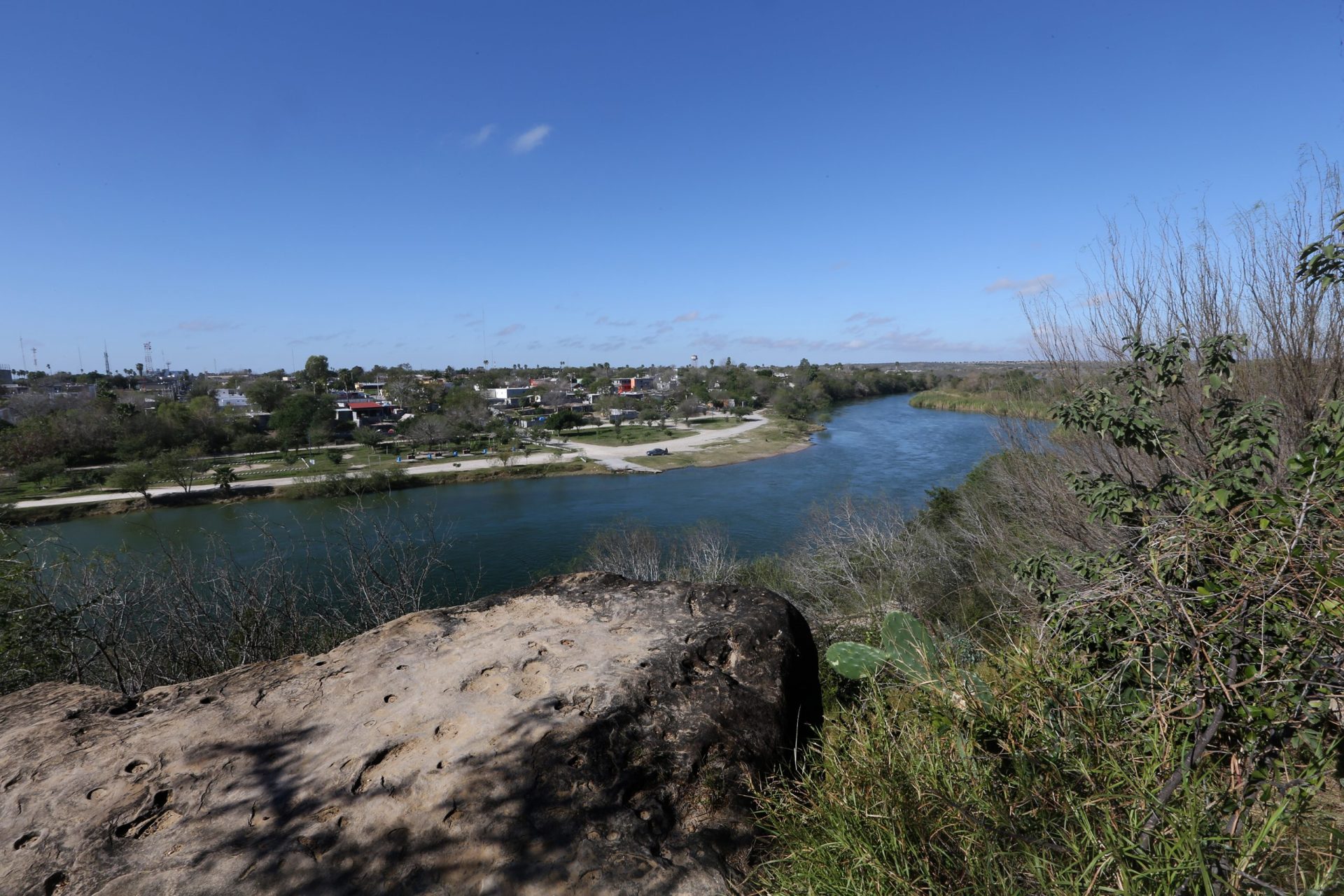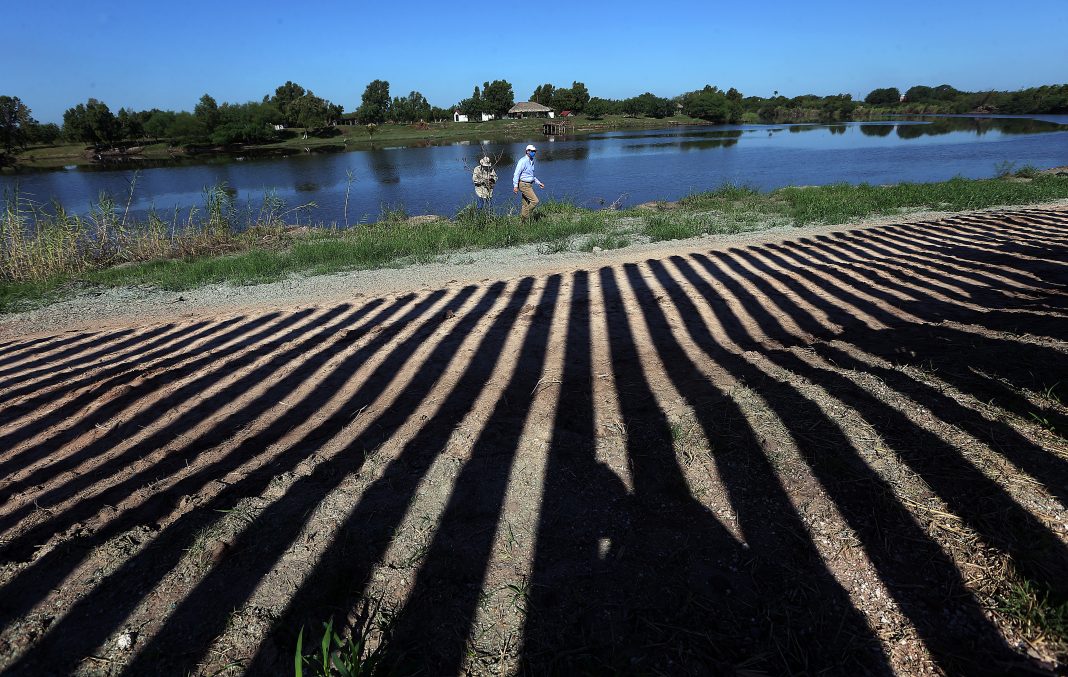|
Only have a minute? Listen instead
Getting your Trinity Audio player ready...
|
McALLEN — How Rio Grande Valley residents will get their water now and in the future is a question with no easy answer. It’s a question of competing interests between cities and farmers, Texas and other states, and the United States and Mexico.
And it’s a question of increasing scarcity as climate change continues to fuel a long-term drought across the American Southwest and northern Mexican states.
“It’s a standoff on where the water is being held and what the delivery obligations are in each country,” former McAllen mayor Jim Darling said of a 1944 binational treaty that governs both U.S. and Mexican water rights from the Rio Grande and Colorado rivers, whose watersheds straddle both nations.
Darling — who has extensive experience studying water issues — was speaking during a Government Affairs Council luncheon hosted by the McAllen Chamber of Commerce on Thursday.
As Darling explained, both nations are obligated to provide each other a certain quantity of water from the two rivers.
The United States must supply 1.5 million acre-feet of water to Mexico from the Colorado River annually. Meanwhile, Mexico is obligated to deliver approximately 350,000 acre-feet every year from the Rio Grande watershed to the United States.
Mexico’s water deliveries to the U.S. are governed on a five-year cycle, meaning as long as it delivers a cumulative 1.75 million acre-feet of water to the Rio Grande by the end of a cycle, it is still considered to be compliant with the treaty.
But over the last two cycles, Mexico has either come dangerously close to not meeting that obligation, or it has outright defaulted.
In the current cycle, which began in October 2020, Mexico has already fallen behind by 1.5 years’ worth of water.

Meanwhile, water levels at the reservoirs fed by the Colorado River — Lake Mead and Lake Powell — are at historically low levels.
The Colorado River Basin supplies water to seven western states whose combined legislative clout can easily quash any efforts by Texas to advocate for its own water needs.
“Every time we’ve done something, at least on a national level, to try to get it, we don’t have enough Texas senators to outdo them,” Darling said.
Exacerbating the issue, the amount of water stored in the Valley’s reservoirs have fallen to worryingly low levels, as well.
Falcon reservoir is at just 12% capacity, while Amistad is at 40%.
Overall, their combined capacity has fallen below 30%, which should trigger municipal conservation policies. But thus far, none have been implemented, Darling said.
Meanwhile, Mexico’s consistently late water deliveries have been putting a strain on water customers here — primarily local farmers — since agricultural water needs are last on the priority list for water access.
“For farmers, it’s already critical,” Darling said when asked how soon the Valley’s water situation will become untenable.
“Now,” echoed Othal Brand Jr., who serves as general manager of Hidalgo County Water Improvement District No. 3.

As Brand explained it, though agricultural water use accounts for some 85% of the region’s total use, that demand plays second fiddle to the 15% share in municipal demand.
And in the times of extreme scarcity, agricultural demand is first on the chopping block, Darling explained.
But that contingency has never truly been tested because — seemingly miraculously — every time the Valley has been on the verge of an exigent water crisis, the region has been saved by tropical weather.
The closest the Valley came to testing the competing demands of municipal versus agricultural demand came in 1998, when the reservoirs fell to an alarming 19% capacity.
As a result, officials commissioned a study of the river’s efficiency as water traveled from the dams to downstream customers, such as the city of Brownsville.
The study was commissioned because — had drought conditions persisted after 1998 — then dam releases for agricultural purposes would have been halted — something that had never been done before.
“Fortunately, we did what we always do for water: we prayed and we got a benevolent hurricane. I don’t know how benevolent it was, but we got water in the watershed,” Darling said.

The proposition to halt the agricultural water supply sparked a lawsuit — one that ultimately died with the tropical rain.
But the potential for crisis remains the same, especially as urban growth here has exploded since the 1990s, leading to sharper demand for municipal water.
The International Boundary and Water Commission, along with the Texas Commission on Environmental Quality, are currently in the process of investigating several projects that would capture more water by reducing inefficiencies in current use.
But — for a water supply system that was built around the region’s history of regularly occurring tropical weather — the best hope yet may be just that.
“The bottom line is let’s pray for a benevolent tropical storm south of us that goes up to the (Rio Grande) basin,” Darling said.




